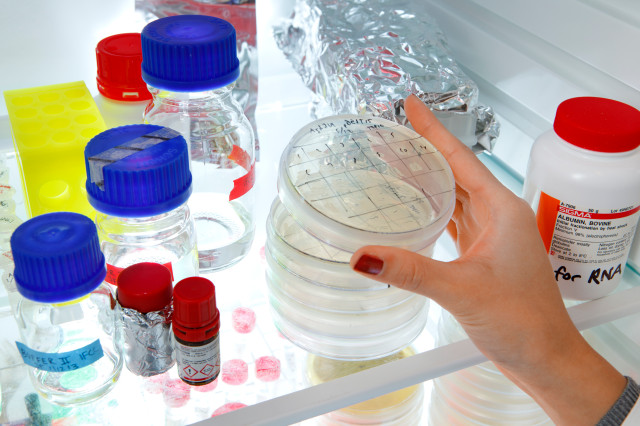BB2540 Flerskalig modellering i kemi och biologi 10,0 hp
Denna kurs är avvecklad.
Sista planerade examination: VT 2024
Avvecklingsbeslut:
Ingen information tillagd
Innehåll och lärandemål
Kursinnehåll
1. Introduction to Multi-scale modelling
2. Review of underlying electronic structure calculations
3. Modelling intermolecular interactions
4. Methods for atomistic scale simulations
5. Introduction to currently used molecular dynamics simulation softwares
6. Meso-scale simulation methods
7. Application of multi-scale modeling to protein structure and folding
8. Computer exercises
Lärandemål
After the course, you should be able to
- outline the purpose and functions of multi-scale modeling;
- give examples of different types of intermolecular interactions;
- describe the fundamental concepts and important approaches in relation to a modeling scale;
- choose an appropriate modeling tool for a given property of a molecular system, with respect to the modeling scale, and apply the modeling tool to calculate the property;
- combine modeling tools at different scales to model a complex biological phenomenon;
- explain how the modeling approaches at different scales interrelate.
Kurslitteratur och förberedelser
Särskild behörighet
At least 150 credits from grades 1, 2 and 3 of which at least 100 credits from years 1 and 2, and bachelor's work must be completed.
The 150 credits should include a minimum of 20 credits within the fields of Mathematics, Numerical Analysis and Computer Sciences, 5 credits of these must be within the fields of Numerical Analysis and Computer Sciences.
Rekommenderade förkunskaper
BB2280 Molekylär modellering
Utrustning
Kurslitteratur
Andrew R. Leach,“Molecular Modeling, Principles and Applications”, 2nd edition;
Lecture notes and handouts will be distributed after each lecture.
Examination och slutförande
När kurs inte längre ges har student möjlighet att examineras under ytterligare två läsår.
Betygsskala
Examination
- LAB1 - Laborationer, 2,0 hp, betygsskala: P, F
- PRO1 - Projekt 1, 1,5 hp, betygsskala: A, B, C, D, E, FX, F
- PRO2 - Projekt 2, 1,5 hp, betygsskala: A, B, C, D, E, FX, F
- TEN1 - Tentamen, 3,0 hp, betygsskala: A, B, C, D, E, FX, F
- UPG1 - Hemuppgift, 2,0 hp, betygsskala: P, F
Examinator beslutar, baserat på rekommendation från KTH:s handläggare av stöd till studenter med funktionsnedsättning, om eventuell anpassad examination för studenter med dokumenterad, varaktig funktionsnedsättning.
Examinator får medge annan examinationsform vid omexamination av enstaka studenter.
Övriga krav för slutbetyg
To pass the course, you should
- attend the lectures and fulfill 10 course assignments (UPG1; 2 credits);
- fulfill 4 computational labs on multi-scale modeling (LAB1; 2 credits);
- complete the written examination which covers the fundamental knowledge in multi-scale modeling (TEN1; 3 credits);
- fulfill 2 projects by applying the knowledge learned from the “Multi-scale modeling” course to solve some practical problems in chemistry and biology (PRO1 and PRO2, together 3 credits).
Möjlighet till komplettering
Möjlighet till plussning
Examinator
Etiskt förhållningssätt
- Vid grupparbete har alla i gruppen ansvar för gruppens arbete.
- Vid examination ska varje student ärligt redovisa hjälp som erhållits och källor som använts.
- Vid muntlig examination ska varje student kunna redogöra för hela uppgiften och hela lösningen.
Ytterligare information
Kursrum i Canvas
Ges av
Huvudområde
Utbildningsnivå
Påbyggnad
Kontaktperson
Övrig information
Students are required to sign up at least two weeks in advance for examination.
The course is given provided at least seven students are admitted.